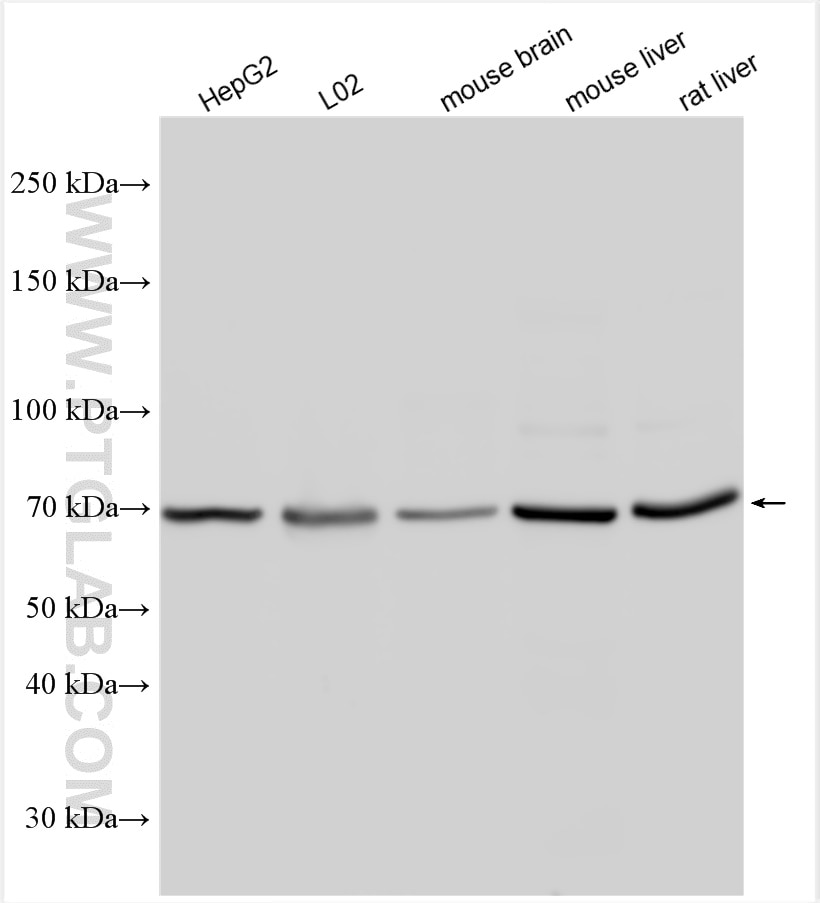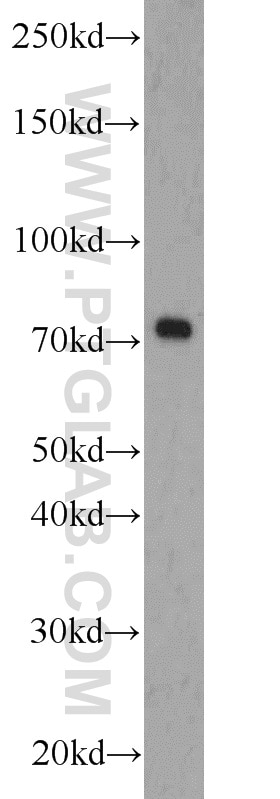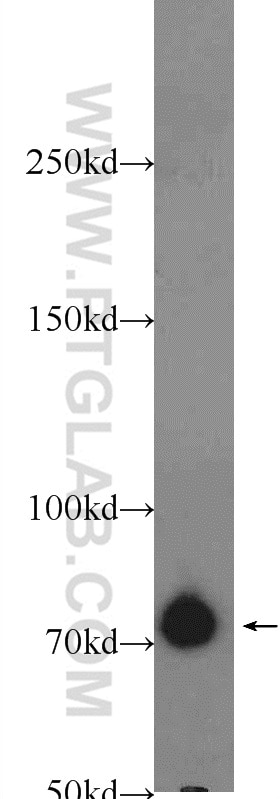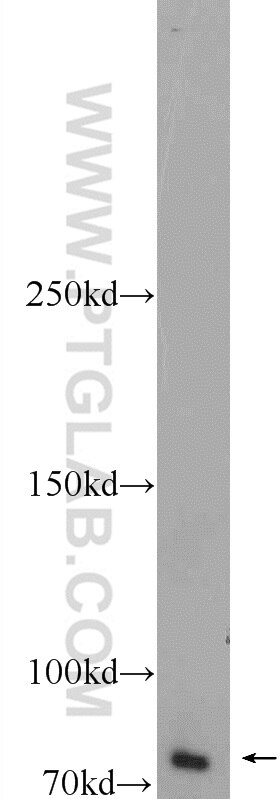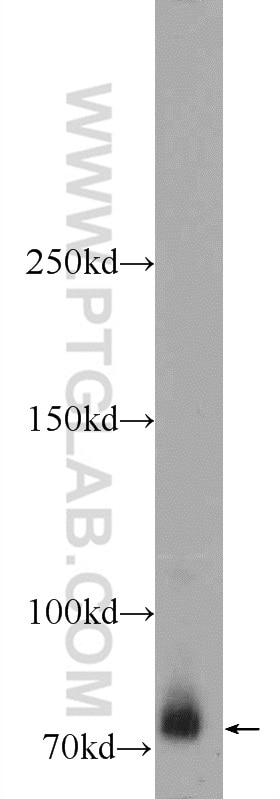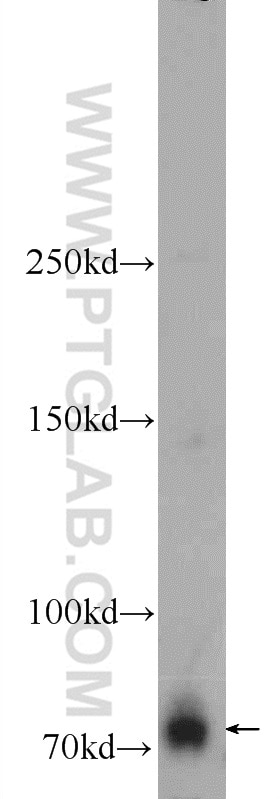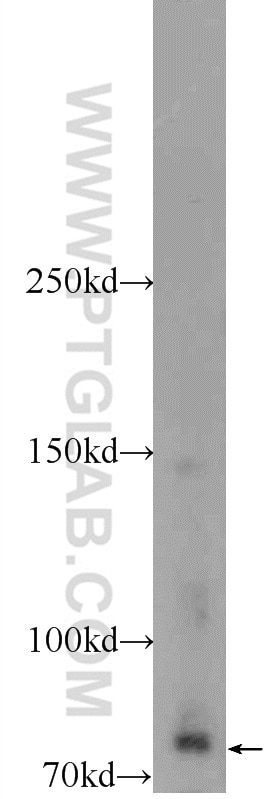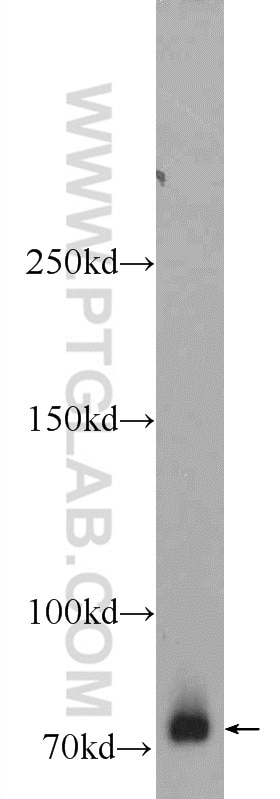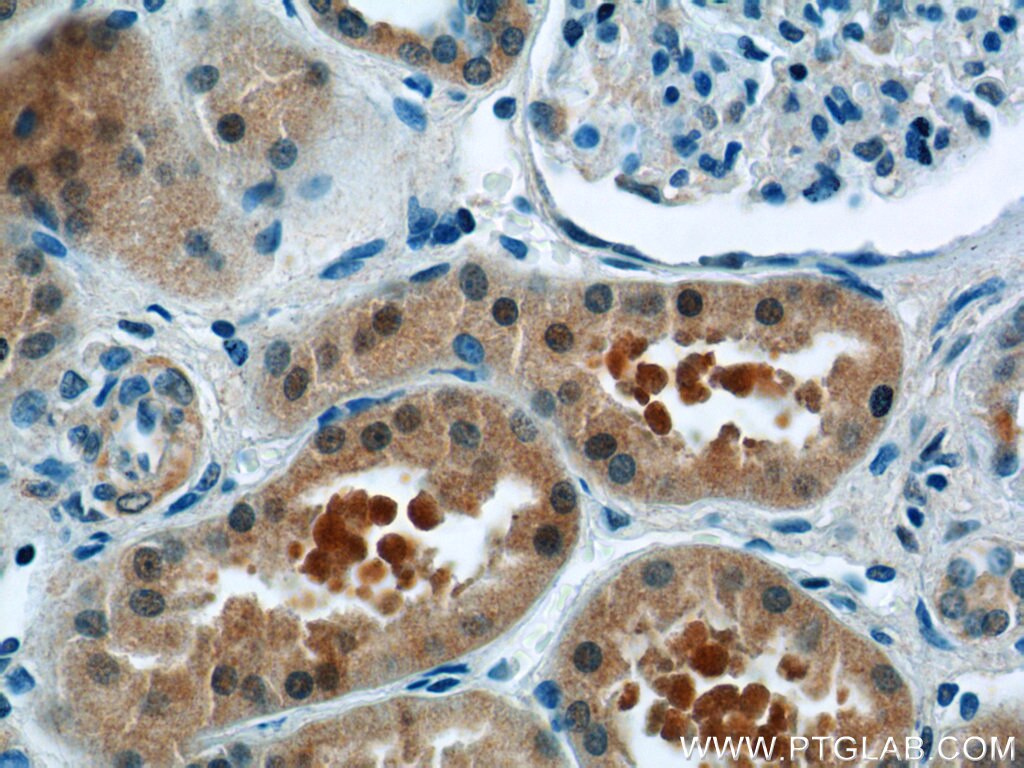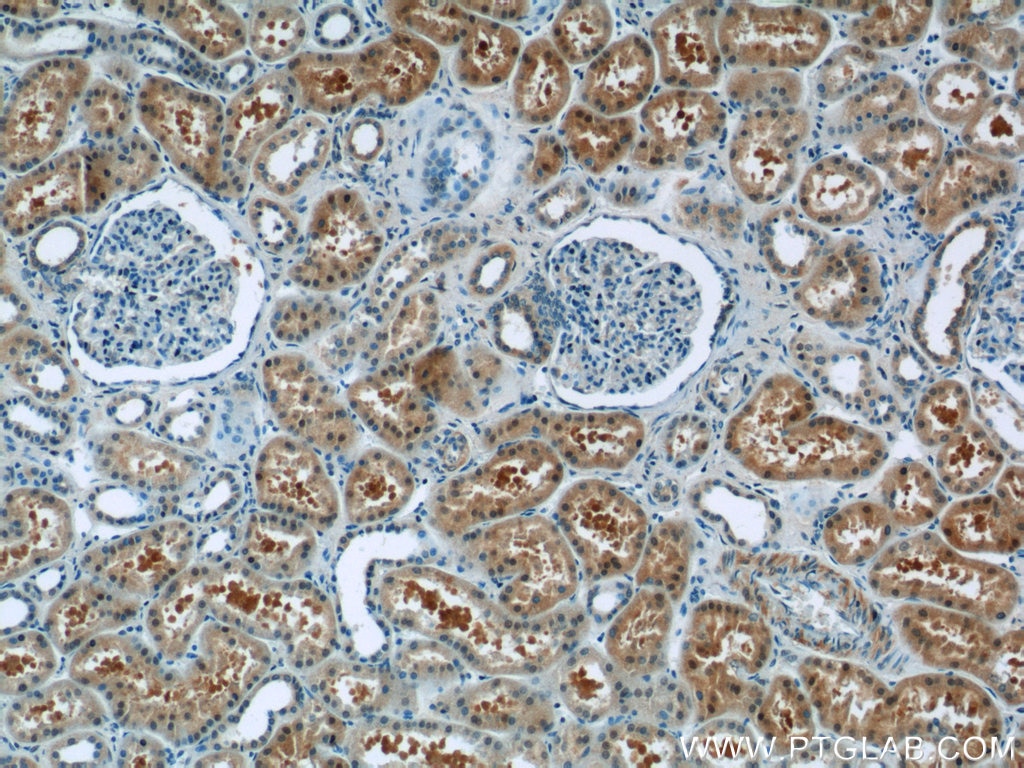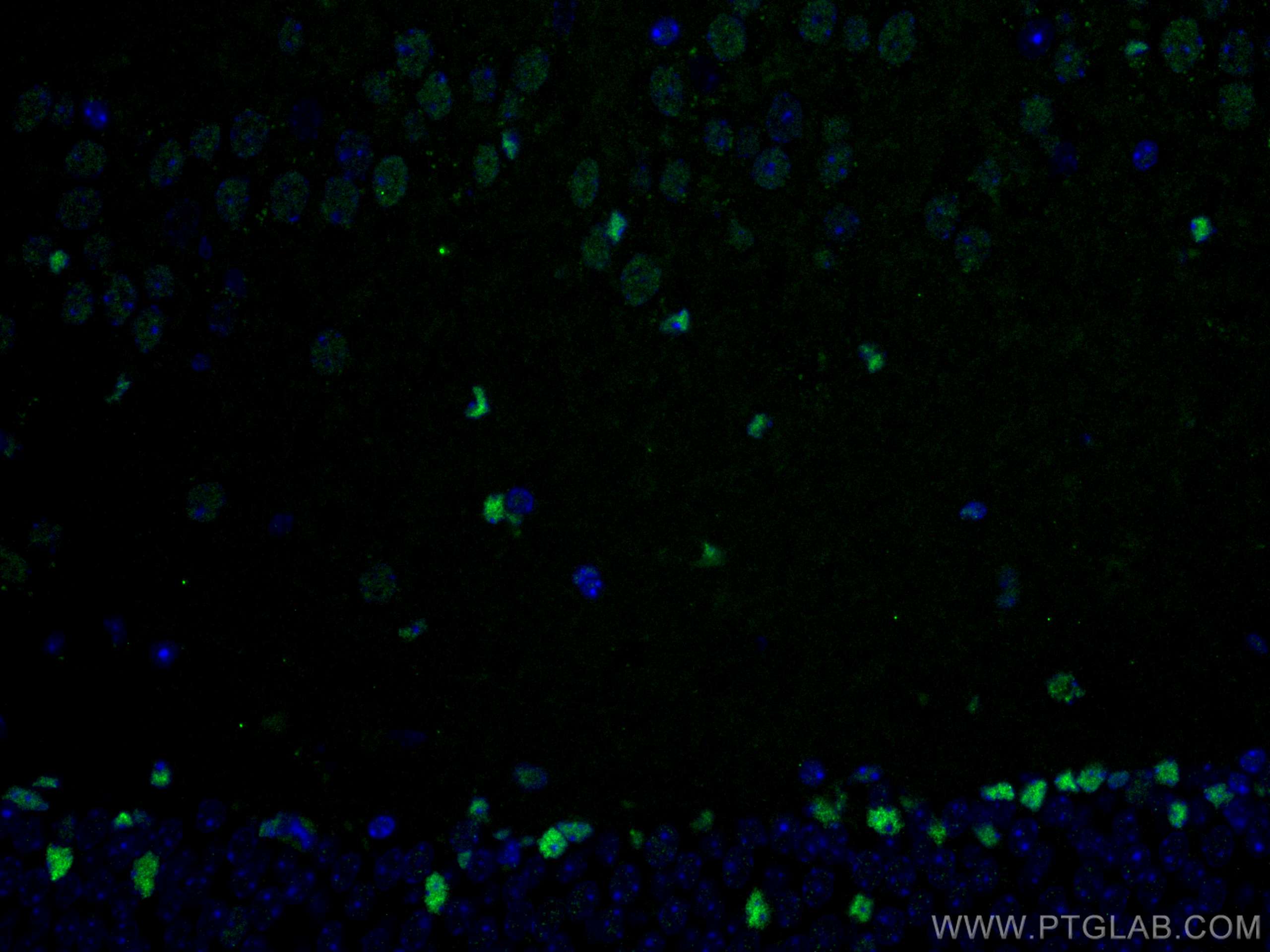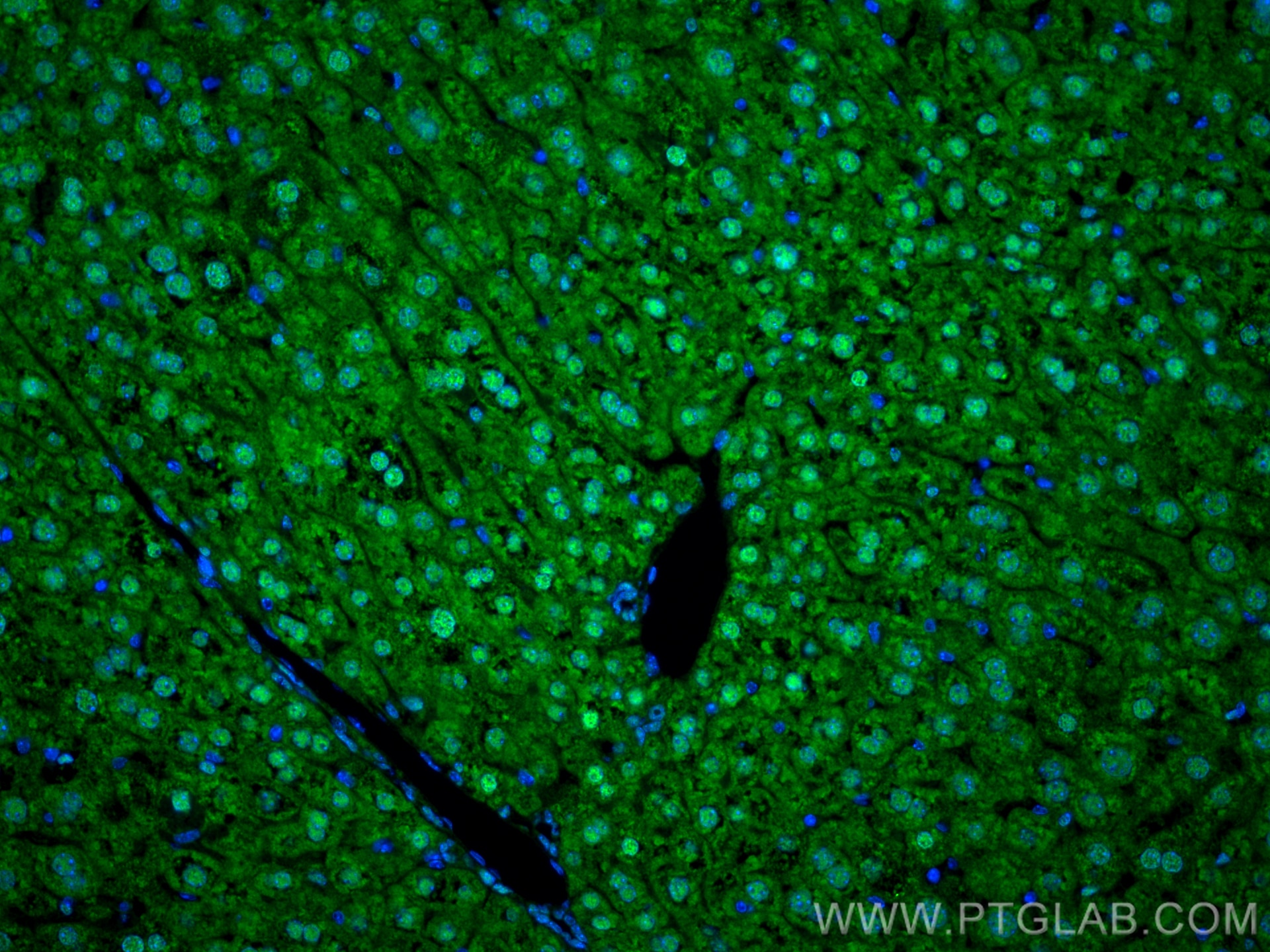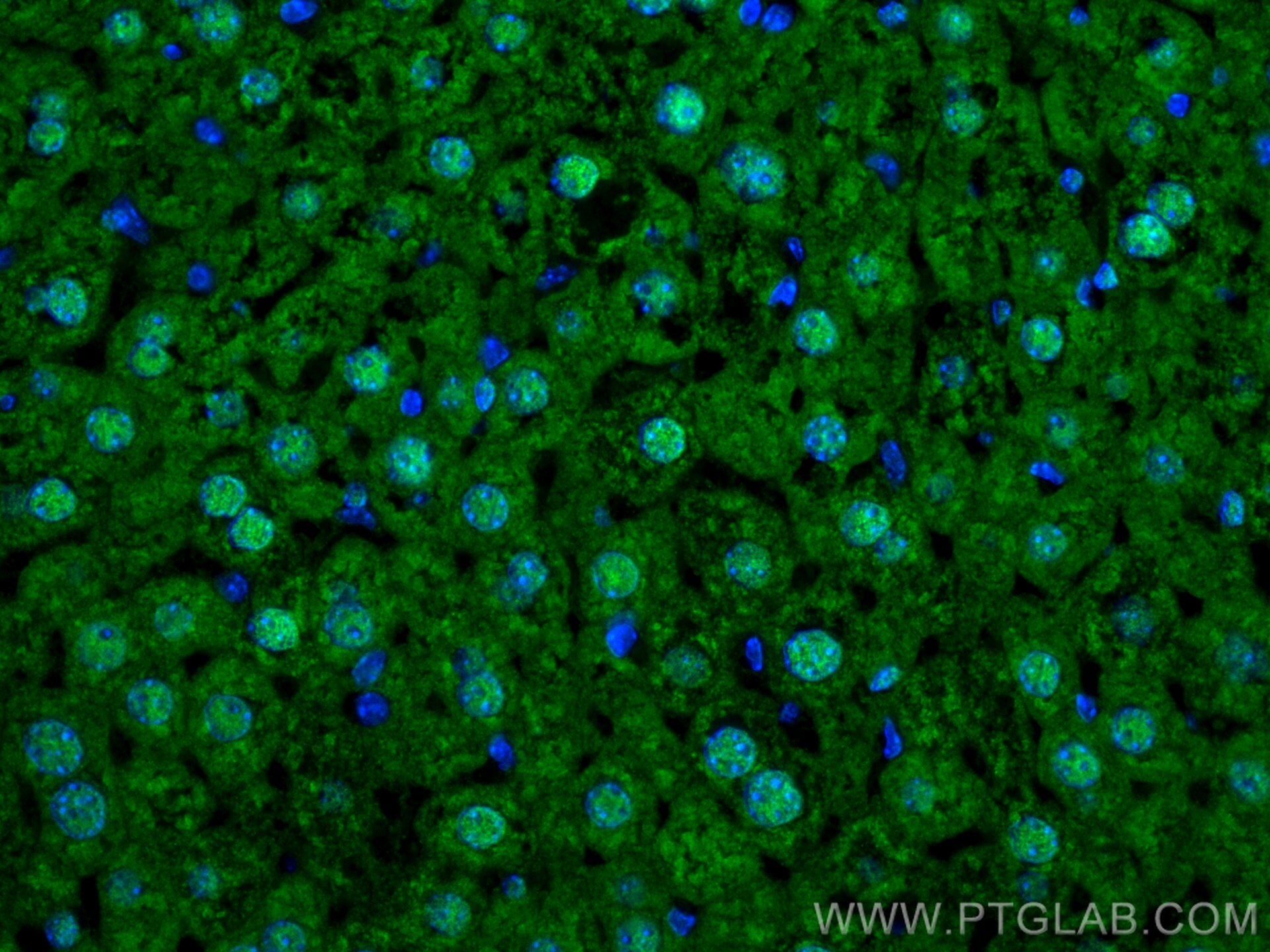- Featured Product
- KD/KO Validated
ZBTB20 Polyklonaler Antikörper
ZBTB20 Polyklonal Antikörper für WB, IHC, IF-P, ELISA
Wirt / Isotyp
Kaninchen / IgG
Getestete Reaktivität
human, Maus, Ratte
Anwendung
WB, IHC, IF-P, ELISA
Konjugation
Unkonjugiert
Kat-Nr. : 23987-1-AP
Synonyme
Geprüfte Anwendungen
| Erfolgreiche Detektion in WB | HepG2-Zellen, HEK-293-Zellen, Jurkat-Zellen, L02-Zellen, Maushirngewebe, Mauslebergewebe, Rattenlebergewebe, RAW 264.7-Zellen |
| Erfolgreiche Detektion in IHC | humanes Nierengewebe Hinweis: Antigendemaskierung mit TE-Puffer pH 9,0 empfohlen. (*) Wahlweise kann die Antigendemaskierung auch mit Citratpuffer pH 6,0 erfolgen. |
| Erfolgreiche Detektion in IF-P | Mauslebergewebe, Maushirngewebe |
Empfohlene Verdünnung
| Anwendung | Verdünnung |
|---|---|
| Western Blot (WB) | WB : 1:2000-1:10000 |
| Immunhistochemie (IHC) | IHC : 1:20-1:200 |
| Immunfluoreszenz (IF)-P | IF-P : 1:300-1:1200 |
| It is recommended that this reagent should be titrated in each testing system to obtain optimal results. | |
| Sample-dependent, check data in validation data gallery | |
Veröffentlichte Anwendungen
| KD/KO | See 1 publications below |
| WB | See 9 publications below |
| IHC | See 3 publications below |
| IF | See 3 publications below |
Produktinformation
23987-1-AP bindet in WB, IHC, IF-P, ELISA ZBTB20 und zeigt Reaktivität mit human, Maus, Ratten
| Getestete Reaktivität | human, Maus, Ratte |
| In Publikationen genannte Reaktivität | human, Maus, Ratte |
| Wirt / Isotyp | Kaninchen / IgG |
| Klonalität | Polyklonal |
| Typ | Antikörper |
| Immunogen | ZBTB20 fusion protein Ag21140 |
| Vollständiger Name | zinc finger and BTB domain containing 20 |
| Berechnetes Molekulargewicht | 668 aa, 73 kDa |
| Beobachtetes Molekulargewicht | 73 kDa |
| GenBank-Zugangsnummer | BC029041 |
| Gene symbol | ZBTB20 |
| Gene ID (NCBI) | 26137 |
| Konjugation | Unkonjugiert |
| Form | Liquid |
| Reinigungsmethode | Antigen-affinitätsgereinigt |
| Lagerungspuffer | PBS with 0.02% sodium azide and 50% glycerol |
| Lagerungsbedingungen | Bei -20°C lagern. Nach dem Versand ein Jahr lang stabil Aliquotieren ist bei -20oC Lagerung nicht notwendig. 20ul Größen enthalten 0,1% BSA. |
Hintergrundinformationen
Zinc-finger proteins contain DNA-binding domains and have a wide variety of functions, most of which encompass some form of transcriptional activation or repression. ZBTB20 (zinc finger and BTB domain containing 20), also known as HOF, DPZF, ODA-8S or ZNF288, is a 741 amino acid protein that localizes to the nucleus and contains one BTB (POZ) domain and five C2H2-type zinc fingers. Expressed in thymus, spleen, lymph node and fetal liver, ZBTB20 exists as either a monomer or a homodimer that is thought to function as a transcription factor, playing a role in hematopoiesis, oncogenesis and immune responses. Multiple isoforms of ZBTB20 exist due to alternative splicing events.
Protokolle
| PRODUKTSPEZIFISCHE PROTOKOLLE | |
|---|---|
| WB protocol for ZBTB20 antibody 23987-1-AP | Protokoll herunterladen |
| IHC protocol for ZBTB20 antibody 23987-1-AP | Protokoll herunterladenl |
| IF protocol for ZBTB20 antibody 23987-1-AP | Protokoll herunterladen |
| STANDARD-PROTOKOLLE | |
|---|---|
| Klicken Sie hier, um unsere Standardprotokolle anzuzeigen |
Publikationen
| Species | Application | Title |
|---|---|---|
Mol Cell Proteomics Selective modulation of the human glucocorticoid receptor compromises GR chromatin occupancy and recruitment of p300/CBP and the Mediator complex
| ||
Cell Prolif In vivo development and single-cell transcriptome profiling of human brain organoids. | ||
J Inflamm Res Aberrant Fluid Shear Stress Contributes to Articular Cartilage Pathogenesis via Epigenetic Regulation of ZBTB20 by H3K4me3. | ||
Wellcome Open Res The integration site of the APP transgene in the J20 mouse model of Alzheimer's disease. | ||
Cell Rep Identification of dynamic RNA-binding proteins uncovers a Cpeb4-controlled regulatory cascade during pathological cell growth of cardiomyocytes. | ||
Transpl Immunol ZBTB20 regulates cardiac allograft rejection through NFкB-mediated inflammation in mouse heart transplantation. |
